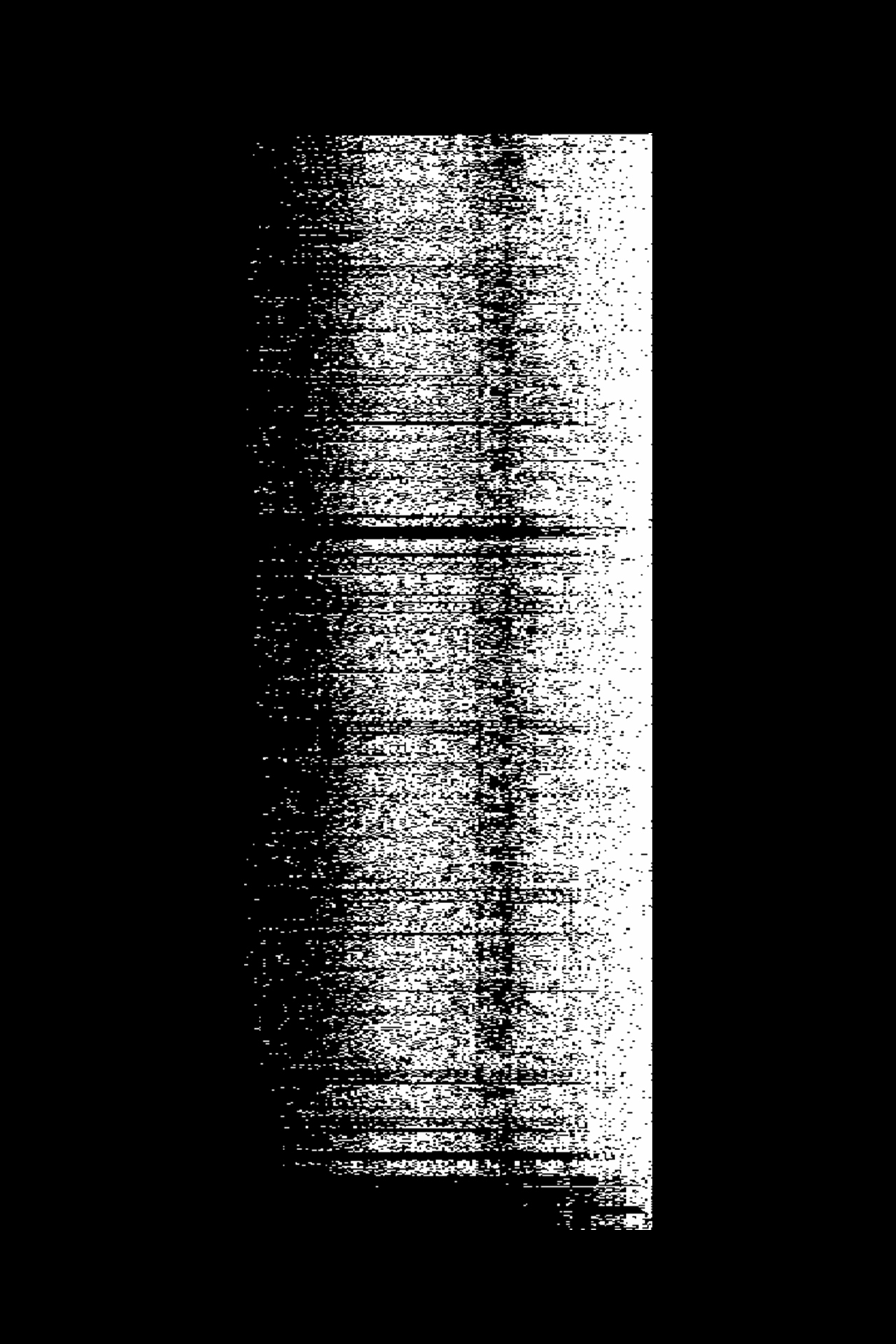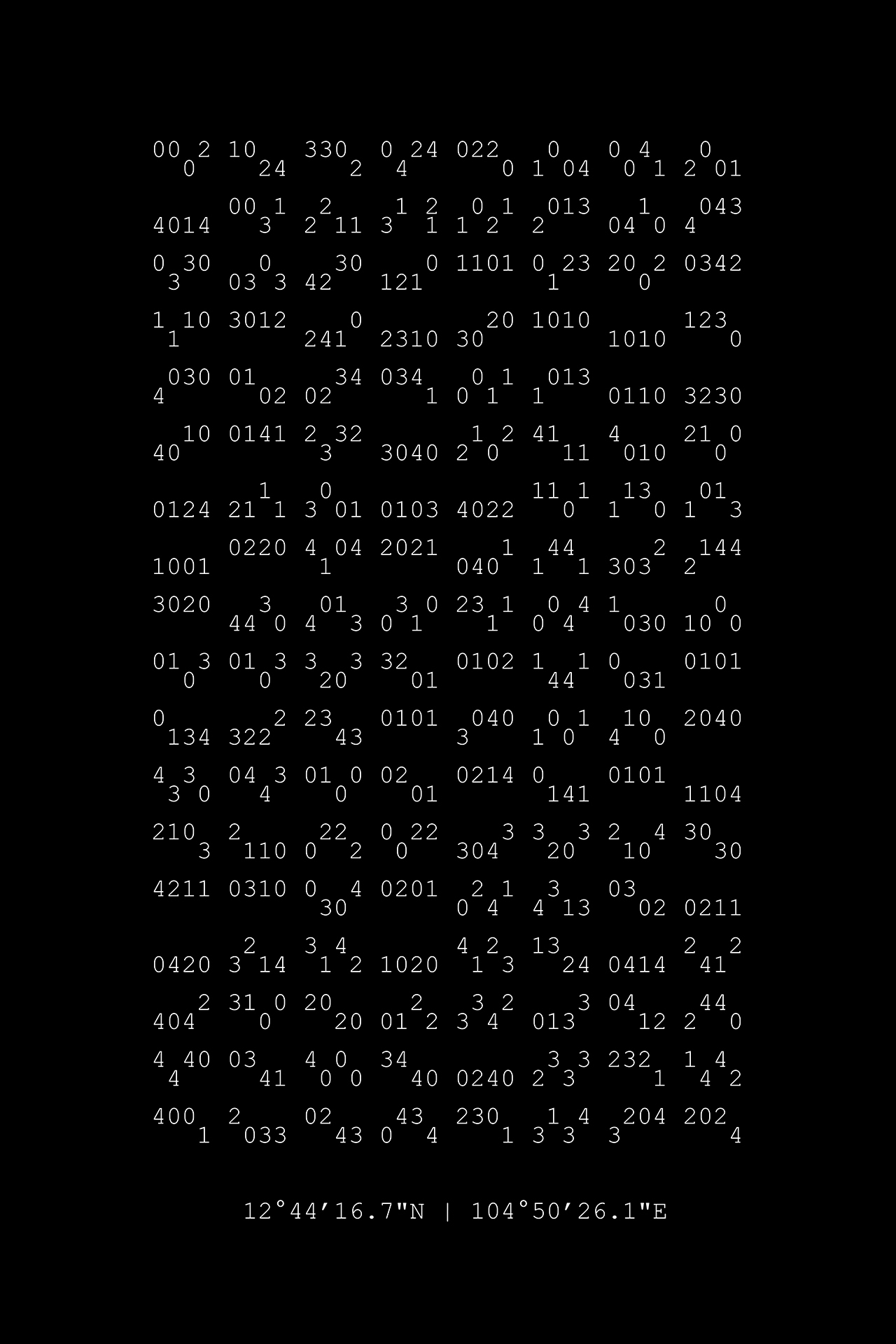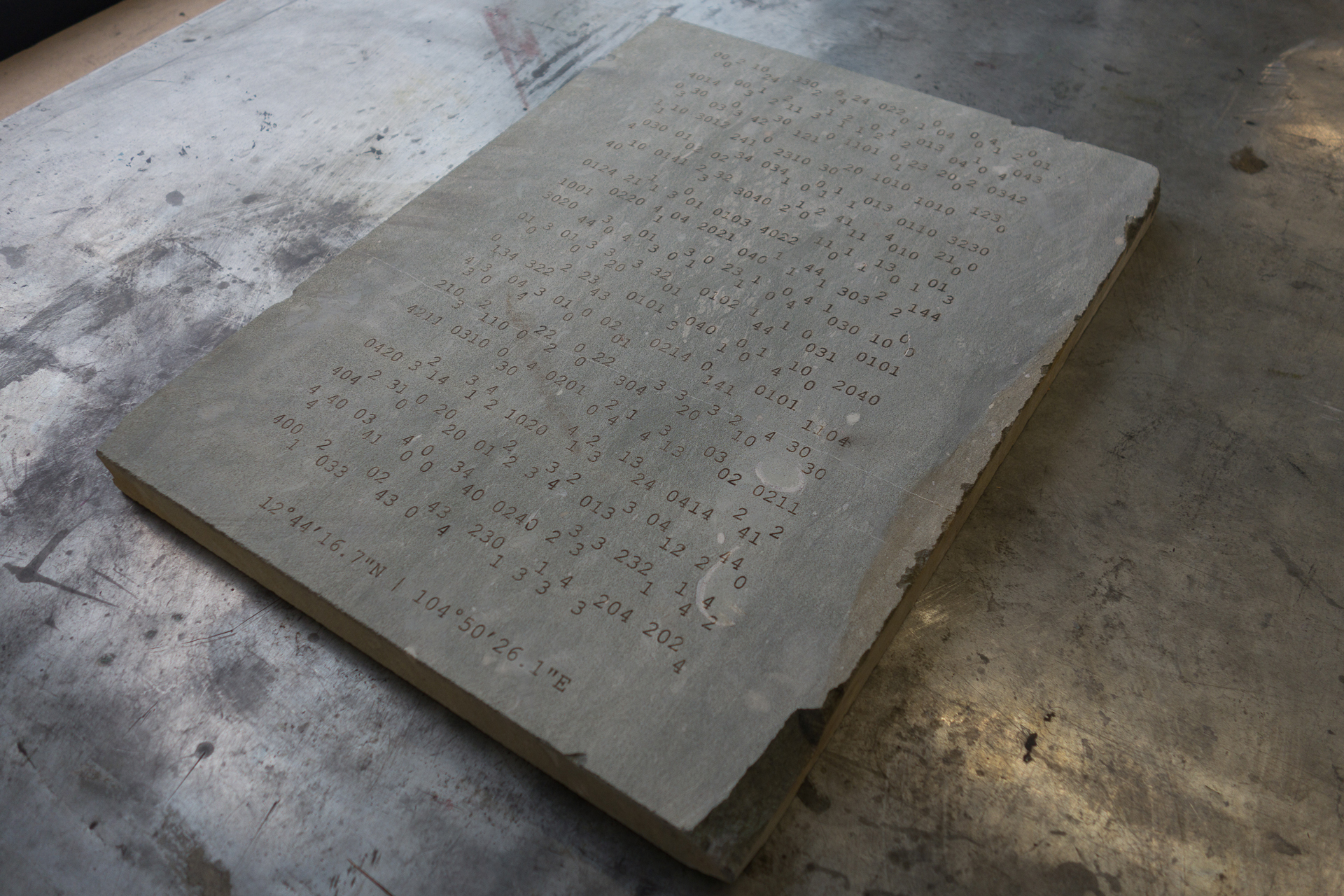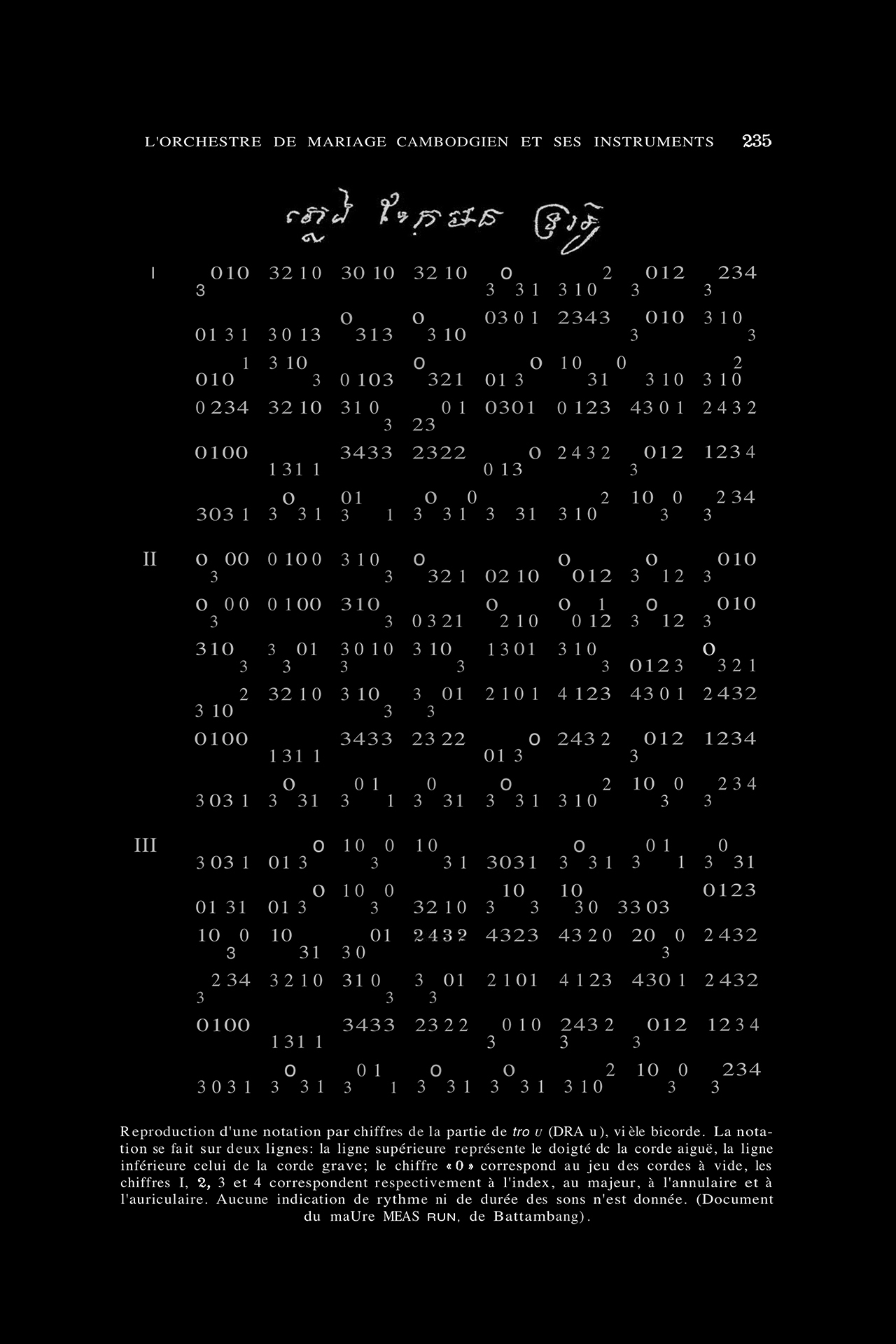Ak (2019)
Artwork
Engraved sandstone
40x30x04 cm
Artwork
Engraved sandstone
40x30x04 cm
Pleng Arak, an ancient music performed during shamanistic ceremonies almost extinguished during the Khmer Rouge period (1975-1979), is now facing new risks: the rise of modern medicine as well as lack of belief from the younger generation. There are few musicians who desire to learn this spiritual healing practice and much knowledge will be lost when these older musicians pass away.
In that context, Sébastien went in 2018 to record one of the last bands of Pleng Arak. The musicians allowed him to photograph them and record their repertoire, provided that it will never be sonically shared. Because it is exclusively performed during sacred rituals, listening to this music outside of its original context - besides being inappropriate - could potentially put the listener at risk.
Sébastien therefore translated the recording’s spectogram into a coding system based on the graphic score of one of the instruments used in Pleng Arak. These abstractions were then engraved on tablets made of limestone and sandstone - the most common in Cambodia - and stored for eternity in the coal mine alongside the Svalbard Global Seed Vault in Norway.






Ly Mut’s Pleng Arak Ensemble (2018)
Analog photographs, 60x45 cm
From TL to BR: Chaem Kha (ឆែម ខា) vocals and drum, Ly Mut (លី មុត) tro sau, Yang Ho (យ៉ង ហូ) pei pok, Thab Pai (ថាប់ ប៉ៃ) vocals and drum, Pot Nen (ពត នេន) vocals and drum, Sum Pheng (ស៊ុំ ផេង) vocals and drum.
Analog photographs, 60x45 cm
From TL to BR: Chaem Kha (ឆែម ខា) vocals and drum, Ly Mut (លី មុត) tro sau, Yang Ho (យ៉ង ហូ) pei pok, Thab Pai (ថាប់ ប៉ៃ) vocals and drum, Pot Nen (ពត នេន) vocals and drum, Sum Pheng (ស៊ុំ ផេង) vocals and drum.


Extract from research (2018 — 2019). From L to R:
Numbered score of a Tro Khmer. Source: ‘Brunet Jacques. VIII. L'orchestre de mariage cambodgien et ses instruments. In: Bulletin de l'Ecole française d'Extrême-Orient. Tome 66, 1979. pp. 203-254.’, Original recording’s spectogram, Encoded sonogram in ASCII.
Numbered score of a Tro Khmer. Source: ‘Brunet Jacques. VIII. L'orchestre de mariage cambodgien et ses instruments. In: Bulletin de l'Ecole française d'Extrême-Orient. Tome 66, 1979. pp. 203-254.’, Original recording’s spectogram, Encoded sonogram in ASCII.

Credits
Initiated during the Time/Place program by WeTransfer and The Jaunt
With the support from Emily Howe (PhD candidate in Ethnomusicology at Boston University), Rakmsey An (Anthropologist at the Kampong Thom Department of Culture) and Tola Say (Reporter for Khmer Times newspaper)
